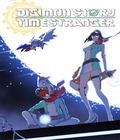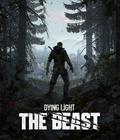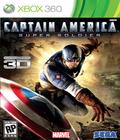Captain America: Super Soldier is a significant step up from many other recent movie-licensed games, such as Iron Man or Thor. Despite this, it may be harder to judge it fairly because most of its gameplay is cribbed from another source. When it's good, it is good, but when it's bad, the flaws stand out a lot worse than they otherwise would.
Unlike many movie tie-in games, Captain America: Super Soldier isn't an adaptation of the film. Instead, it takes place in the middle of the film's story. Set during World War II, Captain America follows the titular hero in one of his many missions against the Nazis, HYDRA and the forces of the Red Skull. In this particular adventure, he discovers a report from Arnim Zola, a HYDRA scientist who is working on replicating the super solder serum that gave Captain America his powers. Captain America, aided over the radio by Peggy Carter and Tony Stark's father Howard, is dropped into an old castle that was once owned by the evil Baron Zemo and is now a HYDRA base. He has to take down the antiaircraft guns so that his allies, the Invaders, can parachute in and help him take down Zola and his minions.
The plot is kind of all over the place. It's clear that the developers couldn't deviate too much from the film's plot, but it makes the game feel unsatisfying. Captain America doesn't defeat anyone in a significant way, and most of the villains escape. Red Skull shows up for what is little more than a cameo appearance. Zola goes from wanting to raise his own army of super soldiers to attempting to resurrect an ancient giant robot to wanting to evolve beyond humanity — all without much explanation. Characters appear and disappear almost randomly and seem to have been included as glorified fan service instead of parts of a cohesive whole. It's disappointing that it feels like a shoehorned side-story instead of a self-contained game.
While the combat system is the high point of Captain America, it's also one of the most blatant clones of a fighting system that I've seen in a video game. God of War and Dante's Inferno are similar, but almost point for point, Captain America is practically identical to Batman: Arkham Asylum. They share the same controls, the same basic attacks, and many of the same abilities. There are some differences, but they are relatively minor and, in certain cases, represent the worst parts of the fighting system.
For those unfamiliar with Arkham Asylum, you have a few set combat abilities. By default, you can attack, counter, dodge and stun. Attacking allows you to damage enemies. Counter can be used when an enemy is about to attack; Cap counters their attack and does a bit of damage in return. Dodge, allows you to either dodge away from or over enemy attacks. Finally, stun can be used to hold enemies still or disable special defenses for a short while.
A Captain America game wouldn't be much without the iconic shield. The shield mostly functions like Batarangs from Arkham Asylum. You can hold a button to manually target it, or double-tap the button to throw out a "quick" shield throw, which can bounce off multiple enemies to disable or stun them. What separates this from Arkham Asylum is that the shield can also be used to block attacks by holding L1. For most enemies, you're better off countering instead of blocking. In Arkham Asylum, the appearance of a gun meant that you had to go into a stealth section to avoid getting shot full of holes. For Cap, it's easier. When an enemy is targeting you, a "tactical sense" appears, with two slowly intersecting white lines. Once they intersect, Cap is shot. If you bring up the shield, Cap automatically blocks the gunfire. The twist is that if you wait to block until just as the two lines intersect, Cap will reflect the bullet back at the shooter. Of all the additions to the game, this is the best. It's integrated perfectly into combat and is incredibly satisfying to pull off. Using the shield-block properly really makes you feel unstoppable.
One of the biggest differences in the fighting system is that there's no longer a reward for chaining together your moves. In Arkham Asylum's freeflow system, players were encouraged to work in a single, unbroken combo string, tossing in every move and being an unstoppable force. In Captain America, you never get that sense of smoothness. Moves don't really have a natural flow together, and there's little punishment for overextending or mashing buttons. That doesn't mean it isn't fun when you rush into a group of HYDRA soldiers and take them all out, reflecting bullets and countering attacks like a real super soldier. It just lacks that little extra touch that moved Arkham Asylum from good to great.
Since the freeflow system from Arkham Asylum is gone, it has been replaced by a more traditional super meter called the focus bar. As you beat up enemies and counter attacks, you build up focus, which you can spend in a few ways. The Crippling Strike is a slow-motion attack that does extra damage to foes. Weaponization allows you to use an enemy's weapon against him at the cost of two bars of focus. In some cases, this does additional damage to the enemy, but in other cases, it lets you use the enemy's weapon for a brief time. Using a Weaponization on a Scorcher allows you to use its grenade launcher, turning the unfortunate foe into a temporary turret. Finally, a full bar can be expended to enter super soldier mode, where Cap gains the ability to shrug off attacks and take out all but the strongest enemies in a couple of hits.
The biggest problem with Captain America's fighting system is just about everything that wasn't taken directly from Arkham Asylum. While the Batman-tested mechanics are solid, everything new fits like a square peg in a round hole. Three of your upgrades are charge moves that you can use by holding L1 and pressing one of the face buttons. This lets you do a slow shield charge move or a ground-pounding shockwave, but there is never a reason to use these moves. They're slow, awkward and offer no particular bonus or benefit that the other, faster moves don't already have. They're not there just for fun, as they're basically impossible to naturally integrate into combat like the other abilities. Likewise, super soldier mode feels like a tacked-on addition; it makes combat easier, but it changes reasonably fun, fast-paced combat into a boring, button-mashing fest.
One area where Captain America actually improved upon Arkham Asylum is boss battles. The freeflow combat system was poorly integrated into the boss fights in Arkham Asylum, aside from the repetitive Bane/Titan fights. Here, the boss battles are fun, work well with the combat system and represent some of the game's better moments. However, the final boss is kind of a letdown. You fight the same weak robot about five times in a row, and it's followed by a cut scene defeat of a much deadlier-looking boss. Since that it was the climax of the game, I was expecting more.
The combat system is good, but unfortunately, the rest of Captain America isn't. The level design is some of the most bland and boring I've seen in a game. Whereas Arkham Asylum was careful to ensure that the entire asylum was interesting and memorable, in Captain America, Zemo's castle is a seemingly endless foray into room after interchangeable room. You may travel from a laboratory to a church to a motor pool, but none of the areas are distinctive. The game is also incredibly linear, forcing the player from location to location, sometimes via unavoidable cut scenes. Arkham Asylum did a much better job of hiding the fact that it was guiding the player along. Oddly, the game seems to think that players would want to explore the grounds. There's a sewer hub that lets you revisit old areas, but there's no reason to do so unless you missed a collectible. It's very easy to go through the game without even being aware that the hub exists.
Captain America also isn't a very good-looking game. Some of the combat animations are quite nice, but everything else ranges from bland to ugly. The characters seem plastic and fake, and there are several times when I noticed some pretty bad slowdown during cut scenes. The environments are drab and unexciting, and that really hurts the game. If the castle were a more interesting place to explore, the linearity and emptiness of the environments could be overlooked. The voice acting is reasonably good, with Chris Evans providing the voice for the title character. The villainous characters have some surprising energy to their performances, but aside from Evans, most of the heroes sound bored.
Captain America attempts to rip off Arkham Asylum's Riddler Trophies idea, but instead of the Metroid-like progression where you use new items and abilities to gradually unlock or find new secrets, pretty much every single bonus in Captain America is right out in the open, and he only gains a few minor combat moves, which, as mentioned above, are basically worthless. Arkham Asylum gave you new gadgets on a regular basis. With Cap, you've got your shield, and that is it. Instead of giving you a reason to explore your environment, you'll find random items scattered around the levels. Most match up in some fashion to an item from Arkham Asylum. Instead of audio tapes, you'll find film reels. Instead of the creepy writings of the mysterious Ghost of Arkham, you'll find the diaries of Baron Zemo. Finding random objects will unlock new challenges and concept art. Unfortunately, the game is missing some of the more clever or interesting challenges, so instead of solving puzzles, you're just collecting objects.
The game attempts to throw some platforming at you, but it's pretty boring. You find a glowing marker and press it, and Cap begins a series of canned acrobatics. The only interaction the player really has is pressing the X button at the right point for a perfect timing bonus, which makes Cap move a little faster. However, you don't gain anything by doing this, and there's no real reason to rush. You're timed in a couple of very rare situations, and if you don't swing fast enough, you get shot.
There's not a lot of value to Captain America. The main campaign is very short and can be finished in about six hours. There are multiple difficulty modes, collectibles and some unlockable costumes, but somehow, they're nowhere near as addictive to search for as the ones in Arkham Asylum. The addition of challenge rooms (another nod to Batman), is very welcome, although only the combat challenges are any fun. They are lacking an online leaderboard and a more detailed scoring system, so they have significantly less replay value than their inspirations. A rental game at best, this one isn't worth buying unless you're an absolutely die-hard fan of Captain America.
In the end, Captain America shows off where Arkham Asylum really succeeded. While the combat system is nearly identical, everything else is a tremendous step backward. It's a testament to the quality of the Arkham Asylum system that it is enjoyable enough to sustain another game. Captain America has very little to offer beyond more of the same, without any of the filler that made Arkham Asylum so exceptional. It's significantly above average for a movie tie-in game, but it falls squarely into the realm of fun but mediocre. If you're a big Captain America fan or want more of the Arkham Asylum combat system before Arkham City comes out, there's fun to be had with this title. Otherwise, there's no reason to pick up the game instead of replaying Arkham Asylum or waiting a few months for Arkham City.
Score: 7.0/10
Editor's Note: Be sure to check out our "Captain America: The First Avenger" movie review.
More articles about Captain America: Super Soldier











 In Captain America: Super Soldier players will become Captain America as he faces the Red Skull and his army in an epic third- person action adventure set in the darkest days of World War II.
In Captain America: Super Soldier players will become Captain America as he faces the Red Skull and his army in an epic third- person action adventure set in the darkest days of World War II. 




































